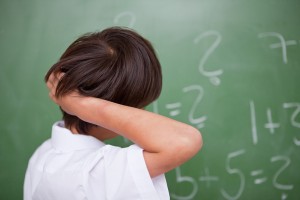 Lice are tiny little parasitic insects that receive their nutrition from the blood of their host. They do not have wings and are therefore spread by close contact with people who are infected with them or with the items of clothing or bedding that those people may be using. Since lice do not fly, it is sometimes thought that they either crawl or jump from one person to another. There are three types of lice to be aware of. , Head Lice, Body Lice and Pubic Lice. The most commonly found are the lice that live on the hair and scalp, known as Head Lice.
Lice are tiny little parasitic insects that receive their nutrition from the blood of their host. They do not have wings and are therefore spread by close contact with people who are infected with them or with the items of clothing or bedding that those people may be using. Since lice do not fly, it is sometimes thought that they either crawl or jump from one person to another. There are three types of lice to be aware of. , Head Lice, Body Lice and Pubic Lice. The most commonly found are the lice that live on the hair and scalp, known as Head Lice.
The signs and symptoms of head lice are itchy scalp, small bumps on the back of the neck and on the scalp that are red in color, the presence of tiny off-white or light brown insects crawling in the hair or back of the neck, and finding lice eggs also called nits, about the size of a pin head, attached to the hair shafts. Some people who are infected with lice have swollen neck glands, indicating a possible infection.
Detecting head lice can be difficult, since they can be confused to the untrained eye with other things found in people’s hair like dandruff, lint, sand, and dirt. The difference is that lice, especially their eggs (nits) are usually firmly attached to the hair follicle and do not come out with simple rinsing or combing. One method of diagnosing lice is to wet the person’s head, separate the hair in to sections, sit them under a very bright light, and using a very fine comb made specifically for this purpose, comb the hair from the scalp outwards looking for lice and their eggs.
Treating lice involves using a shampoo made specifically for this purpose. These shampoos are very different than regular hair products and they are to be used very carefully, making sure that the instructions are followed closely. Usually the recommendation is to use the product once and wait a few days to see if it is working.
Each day after treatment it is recommended to use the special fine tooth comb to remove the lice and the nits. It is also recommended that all bedding be thoroughly washed in hot water and dried at a high temperature to limit the possibility of reoccurrence. If the signs and symptoms of an infestation persist, it is advised to see a dermatologist who may prescribe a stronger medication to treat the problem.
When a person is diagnosed with lice, it is wise to limit their contact with others until the problem is resolved. This is especially true of school aged children.
If you suspect that your child has lice and over-the-counter remedies are not successful, please schedule an appointment with a physician at Jamaica Hospital by calling 718- 206-7001.
All content of this newsletter is intended for general information purposes only and is not intended or implied to be a substitute for professional medical advice, diagnosis or treatment. Please consult a medical professional before adopting any of the suggestions on this page. You must never disregard professional medical advice or delay seeking medical treatment based upon any content of this newsletter. PROMPTLY CONSULT YOUR PHYSICIAN OR CALL 911 IF YOU BELIEVE YOU HAVE A MEDICAL EMERGENCY.
